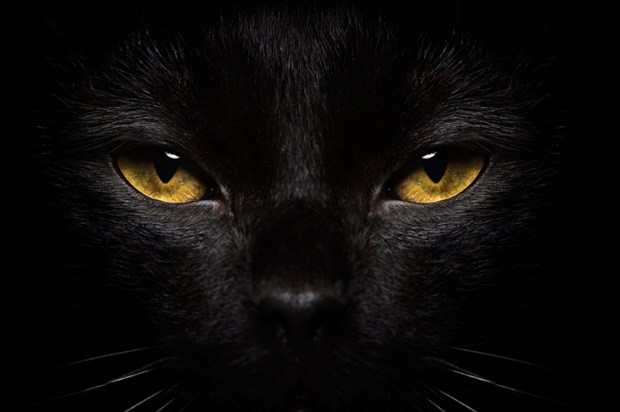Boy and I have been driving the Fawn mad by singing the ‘Johny Johny Yes Papa’ song. It goes (roughly to the tune Twinkle, Twinkle Little Star): ‘Johny Johny/ Yes, Papa/ Eating Sugar?/ No, Papa/ Telling Lies?/ No, Papa/ Open Your Mouth!/ Ha Ha Ha.’ In the likely event that you don’t know it, you’ll probably find it as irritating as the Fawn does — especially the misspelling of Johnny and the bad Indian accent. But in the unlikely event that you do, you’ll be congratulating yourself on your pop cultural credibility. This is because for a brief period peaking around last weekend — ‘Johny Johny Yes Papa’ was the world’s most fashionable meme.
Even if you’re not exactly sure what a meme is, you’ll be familiar with a few. Downfall — aka ‘Hitler reacts to’ — has become a stalwart of the genre. The scene (lifted from the 2004 movie starring Bruno Ganz) shows Hitler in his bunker gradually losing his rag as his nervous generals break the news on how badly the war is going. The subtitles to the German soundtrack have been endlessly recast to explore amusing anachronistically topical themes. More than 1,000 variants have appeared since its first usage in 2006, including one earlier this year where Hitler discovers Germany has been knocked out of the World Cup in the early stages, and another — pop will eat itself — in which Hitler is outraged to learn that there are numerous Downfall parody videos.
Another meme you’ll surely have glimpsed on social media is the one known as ‘Distracted boyfriend’. Taken from a stock image database, it shows a man admiring the rear of a passing woman while his girlfriend looks at him in obvious disgust. Again, through the use of captions — a throwback, almost, to those 19th-century cartoons where, say, a bear is labelled Russia and a lion Britain — the opportunities for political and social commentary are limitless.
Its first known appearance in captioned form was in a Turkish Facebook group in January last year where the man is labelled ‘Phil Collins’, the newfound object of his admiration as ‘Pop’ and the appalled girlfriend as ‘Prog’. Quite an odd subject for incisive topical comment, given that the former Genesis drummer made that controversial musical transition nearly 40 years ago. But memes move in mysterious ways. Since then, it has grown a lot more sassy and relevant. An early classic (emerging at about the time all the kids were starting to chant ‘Oh Jeremy Corbyn’) was one where the man labelled ‘The youth’ looks longingly at ‘Socialism’ — while ‘Capitalism’ is properly aghast. In the most recent variant, both the man and his girlfriend are looking ahead, completely uninterested, as they pass the girl labelled ‘New centrist party’.
The word ‘meme’ was coined by Richard Dawkins in his 1976 book The Selfish Gene to explain the way cultural information spreads like a disease — hence ‘going viral’. It was a shortened version of ‘mimeme’ (as in the Greek ‘mimesis’) and was, Dawkins declared, to be ‘pronounced to rhyme with cream’. Now — just like they were always supposed to do — memes are constantly mutating and they are absolutely everywhere.
A meme can be anything from a hashtag or catchphrase (often involving a misspelling or mistranslation — ‘HODL’; ‘all your base are belong to us’) to an image or a video. Often what gives them their virality — the quality that makes them shareable and which thus turns them into memes — is a certain recondite knowingness or sly wit, or sheer bizarreness. By sharing them you are signalling that you are not a mere normie but one of the internet’s in-crowd.
Meme connoisseurs are a snooty bunch. They hate it when you come to a meme late (‘Oh that one. Yeah that was around a month ago’). And they loathe having to explain what a meme is about. Basically if you don’t get it, you weren’t meant to. The best memes are those that cannot be understood without reference to, say, an obscure children’s TV show you only saw if you were exactly the right age in the mid-Noughties — or to an earlier, similarly incomprehensible meme which the uninitiated can never hope to crack without a trip to Knowyourmeme.com.
Which is why I felt so flattered and privileged when Boy decided to show me ‘Johny Johny Yes Papa’. It features a Sims-style animated family with a dark secret: they are all junk food addicts. Johny (a disturbingly macrocephalic baby) is addicted to sugar; Dad (with his T-shirt and moustache he looks western and possibly gay; yet, like his pale-skinned, red-headed wife, he has an Indian accent) scoffs cakes; Mum is into pizza. When caught indulging their addiction, their first response is to lie. But on being forced to open their mouths — revealing the half-chewed food therein — they laughingly admit their crime. Then, in an even stranger coda, the entire family, dog, cat and all, celebrate the vital lesson they have supposedly learned by feasting on the stuff that was supposed to be bad for them.
It comes from the website of Dubai-based Billion Surprise Toys and was made originally as a behavioural instruction video for young children, more than a billion of whom have watched it (and its earlier variants) since it appeared in 2009. Then one or two passing adults noticed how arrestingly bizarre it was — and because they happened to be key influencers, the meme went viral.
By now I imagine you’ll be dying to see what the fuss is about. But it may be too late. Search for it now and all you’re likely to come up with is the message ‘This video has been removed in response to a report from the copyright holder’. That’s memes: you just had to be there at the time…
Got something to add? Join the discussion and comment below.
Get 10 issues for just $10
Subscribe to The Spectator Australia today for the next 10 magazine issues, plus full online access, for just $10.
You might disagree with half of it, but you’ll enjoy reading all of it. Try your first month for free, then just $2 a week for the remainder of your first year.















Comments
Don't miss out
Join the conversation with other Spectator Australia readers. Subscribe to leave a comment.
SUBSCRIBEAlready a subscriber? Log in